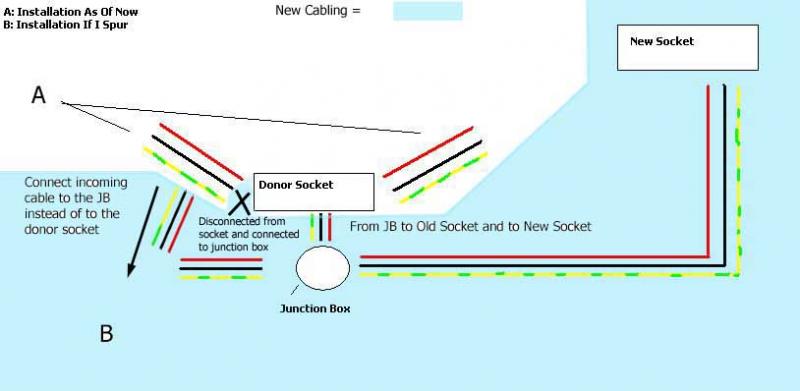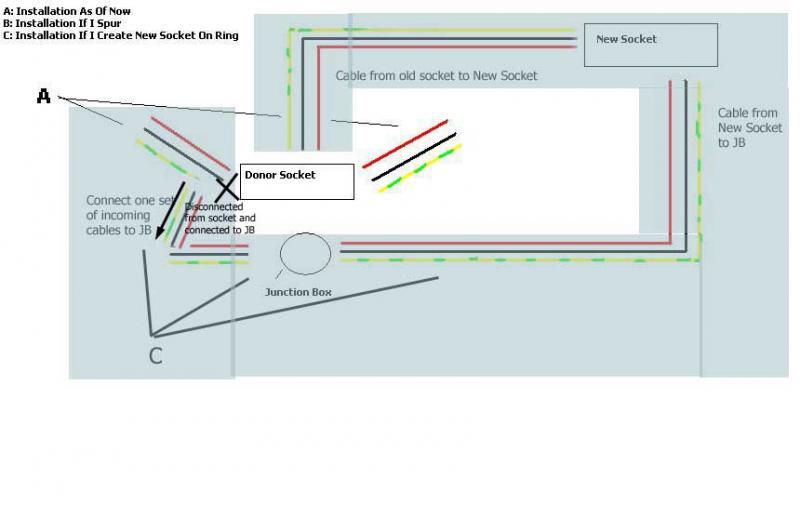Hi all,
Just a quick question, I'm adding in a new mains single socket to power a single adsl router (which uses a 12v DC type adaptor). It will only powering that item, and nothing else.
I have some 3 core 1.5mm flex cable which I was going to use and finish the job today, but wondering whether I should just get some 2.5mm twin and earth instead?
Is the 3 core 1.5mm flex (heat resistant, lol) a no no in this type of situation?
The socket giving power to the new one is a double socket with 2 sets of wires going into it, and I was going to basically add another set (i.e. for this new socket), or use a junction box to connect them all up.
Is that the correct way of doing it, or have I got it wrong (wouldn't be the first time!).
Thanks in advance
Just a quick question, I'm adding in a new mains single socket to power a single adsl router (which uses a 12v DC type adaptor). It will only powering that item, and nothing else.
I have some 3 core 1.5mm flex cable which I was going to use and finish the job today, but wondering whether I should just get some 2.5mm twin and earth instead?
Is the 3 core 1.5mm flex (heat resistant, lol) a no no in this type of situation?
The socket giving power to the new one is a double socket with 2 sets of wires going into it, and I was going to basically add another set (i.e. for this new socket), or use a junction box to connect them all up.
Is that the correct way of doing it, or have I got it wrong (wouldn't be the first time!).
Thanks in advance




